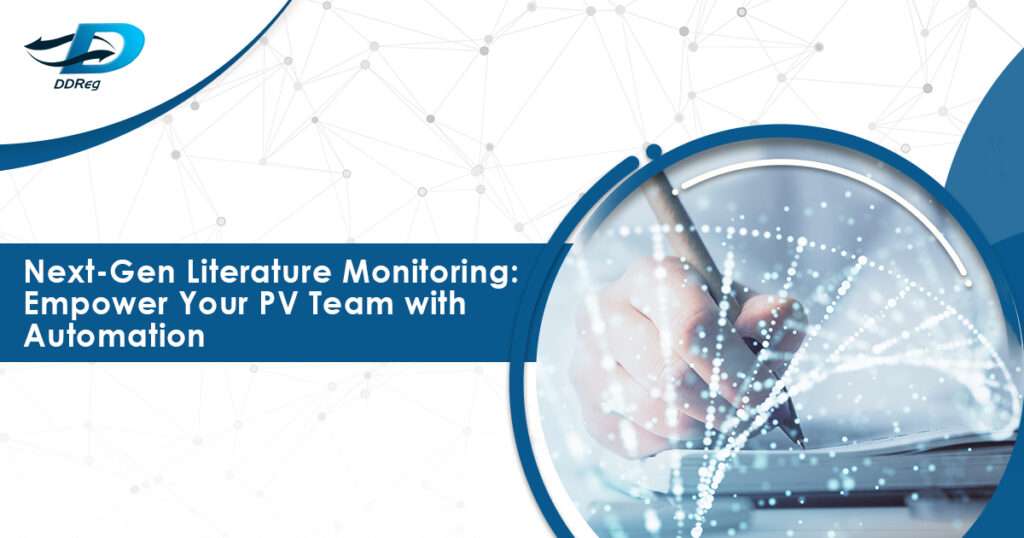
Literature monitoring, a key component of pharmacovigilance (PV), involves searching and analyzing medical and scientific publications, including journal articles, case reports, conference abstracts, and online content to identify reports of ADRs, safety signals, or other pertinent information. This surveillance is essential for detecting previously unknown adverse reactions or risks that may not have emerged during clinical trials. Consequently, PV literature monitoring serves as an indispensable early warning system, significantly contributing to the ongoing evaluation of a drug’s risk-benefit balance.
However, the volume of global scientific publications has grown exponentially, posing a challenge. Global scientific publishing has surged from ~2.0 million articles in 2010 to approximately 3.3 million in 2022—a ~65% increase. On average, global annual growth hovers around 4.1%, with high-growth areas (like mega-journals and OA platforms) reaching up to 5.6% per year. MEDLINE alone now holds over 38 million records (as of December 2024), with thousands more added daily. (Source- MEDLINE- Wikipedia)Human reviewers struggle to keep up with this surge across global databases such as PubMed, Embase, and Scopus.
To address this, automation driven by artificial intelligence (AI), machine learning (ML), and natural language processing (NLP) transforms the process, making it faster, more precise, and cost-effective. Notably, regulatory bodies like the European Medicines Agency (EMA) and the U.S. Food and Drug Administration (FDA) mandate this process, requiring marketing authorization holders (MAHs) to consistently monitor literature to ensure compliance with safety regulations.
How Automation Transforms Literature Monitoring
Traditionally, literature monitoring has been a manual, labor-intensive process. With the tremendous growth of medical literature, thousands of new citations are added to MEDLINE each year, making manual monitoring increasingly challenging. Automation utilizes advanced technologies such as artificial intelligence (AI), machine learning (ML), and Natural Language Processing (NLP) to streamline the literature monitoring workflow.
AI enables automated literature search and retrieval. AI algorithms continuously search extensive online databases and journals, as well as drug-related terminology, to ensure that nothing is missed. This ability to process thousands of articles in a fraction of the time ensures comprehensive coverage that is simply unattainable through manual review.
Harnessing AI for Enhanced Literature Monitoring in Pharmacovigilance
Once relevant articles are identified, intelligent data extraction becomes crucial. NLP algorithms are specially trained on biomedical text to analyze complex medical language and extract vital information from scientific publications. This includes identifying drug names, suspected adverse events, treatment outcomes, and even causality assessments. These advanced NLP engines can manage complex sentence structures, ensuring high accuracy in data extraction.
For identifying potential safety issues, signal detection in PV becomes essential. ML is a subset of AI that focuses on algorithms capable of learning from data and improving their performance over time without explicit programming. ML models learn from large datasets to detect patterns, correlations, and anomalies—such as unreported ADRs or unexpected drug interactions. These models can adapt to new data, enhancing their ability to detect under-reported or emerging safety signals that might be overlooked by manual review.
Future Trends in Literature Monitoring
The automation of literature monitoring represents just the beginning of a transformation in pharmacovigilance. Advancements in AI, such as deep learning, predictive analytics, and hyperautomation, could further enhance literature monitoring. Predictive analytics will identify risks before they surface by analyzing trends from electronic health records, wearables, and patient reports for early warnings.
Hyperautomation will integrate AI throughout the entire safety lifecycle—from data intake to reporting—enabling faster, smarter decision-making. This will lead to a more personalized, patient-centric approach to risk management. As automated literature monitoring becomes more widespread, we can expect greater harmonization of safety surveillance practices across various regions and organizations. Standardized AI models and data formats will facilitate more efficient sharing of safety information.
Conclusion
The automation of literature monitoring in pharmacovigilance is a transformative step toward ensuring drug safety in an era of growing medical literature. Leveraging AI technologies enables pharmaceutical companies to boost efficiency, ensure accuracy, meet compliance standards, and reduce operational costs. As technology continues to evolve, automation will play an increasingly vital role in safeguarding patient health, making it an indispensable tool in modern pharmacovigilance.
How Can DDReg Help?
The increasing volume of global scientific literature and evolving regulatory mandates demand a robust, intelligent approach to literature monitoring. DDReg offers end-to-end literature monitoring solutions using latest technologies. Our system ensures real-time screening of databases like PubMed, Embase, and others, with high-precision data extraction and signal detection capabilities. Backed by a team of pharmacovigilance experts, we deliver compliant, timely, and audit-ready outputs that meet both local and global regulatory requirements. Whether you require standalone literature monitoring or integration into a broader pharmacovigilance system, DDReg provides scalable, cost-effective solutions tailored to your specific needs.
Read more about AI in Pharmacovigilance from our experts here: Harnessing AI for Enhanced Literature Monitoring in Pharmacovigilance
